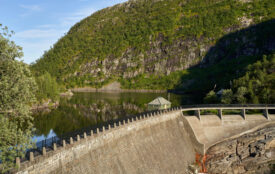Study sheds light on the climate effect of settlement
An empirical analysis of 113 countries shows: curbing land consumption is a central element of promising climate protection strategies.
Curbing land consumption is a central element of promising climate protection strategies. This is the conclusion of an empirical study of 113 countries co-authored by the Berlin-based climate research institute MCC (Mercator Research Institute on Global Commons and Climate Change). It presents 16 indicators to characterise patterns of built structures such as settlements and transport routes at the national level, and determines the correlation with energy consumption and CO2 emissions. The study was led by the University of Natural Resources and Life Sciences Vienna. It has now been published in the renowned journal Nature Communications.
Built structures such as settlements and transport infrastructure are known to influence per capita energy demand and CO2 emissions in cities. It has been unknown what role built structures play at the national level because this could not be investigated so far due to a lack of suitable indicators. Discussion has focused on other potential determinants, most notably gross domestic product (GDP). The study now finds: built structures are about as important as GDP in predicting the climate effect.
“This is plausible because roads, highways, parking lots, and buildings require energy for their construction and use, which leads to high CO2 emissions in our fossil energy-dominated energy systems”, explains Felix Creutzig, head of the MCC working group Land Use, Infrastructure and Transport and a co-author of the study. “Additional built-up area also means more heated or cooled space in buildings and longer distances between destinations, which increases energy demand in buildings and transport. Our results show that land-saving urban and regional development is central to long-term climate goals.”
The analysis means that findings from studies of cities in general also apply at the national level. The indicators also have significant additional explanatory and predictive power over traditional factors. They can help develop much stronger models of energy use and CO2 emissions at the national level than has been possible in the past. This will allow researchers to expand their scenario analysis and modelling capabilities: they might incorporate patterns of built structures as critical determinants when it comes to the question of a potential decoupling of energy use and emissions from GDP or societal well-being.
The study also shows that the extent and pattern of built structures strongly influence differences between countries in energy demand and CO2 emissions, while population density plays a smaller role than previously thought. The indicator with the strongest and most consistent predictive power across analyses is built-up area per capita, which emerges as the second most important variable after GDP in most statistical analyses. This is also true in analyses that account for the GDP effect.
“Limiting land consumption for new buildings and infrastructure thus turns out to be a central element of successful climate protection strategies,” concludes the lead author of the study, Helmut Haberl of the Institute for Social Ecology at the University of Natural Resources and Life Sciences Vienna.
- Haberl, H., Löw, M., Perez-Laborda, A., Matej, S., Plank. B., Wiedenhofer, D., Creutzig, F., Erb, K., Duro, J., 2023, Built structures influence patterns of energy demand and CO2 emissions across countries, Nature Communications
Source
MCC (Mercator Research Institute on Global Commons and Climate Change) 2023








